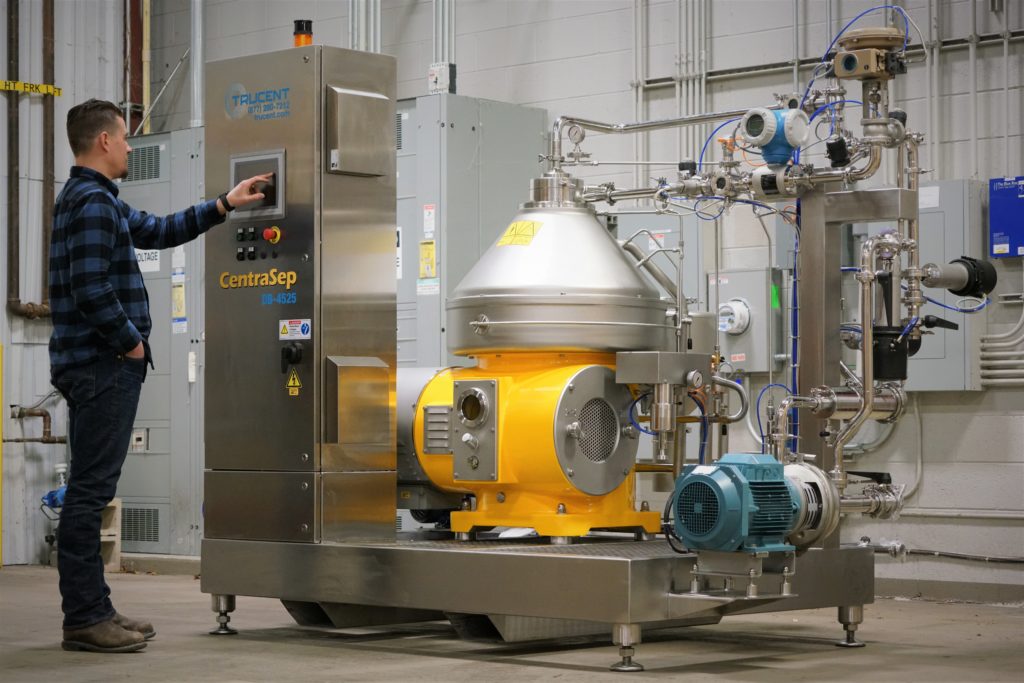
In craft beer, nothing turns heads more than a pristine product oozing with flavor and aroma. But making beer is a business, so for breweries worldwide, pushing the envelope means finding new ways to brew the best beer while also increasing yield, shelf life, and profits. A beer centrifuge has been a gamechanger in the industry, letting breweries take their businesses and beers to the next level.
With companies such as Trucent or Alfa Laval leading the way, centrifuge technology is helping breweries—including small to mid-size operations—produce better quality beer and increase yields.
Read on to learn how implementing a centrifuge changed the game for Mortalis Brewing in New York and HOB Brewing in Florida and for insights from Trucent on how a centrifuge could potentially help improve your product.
What We’ll Cover in This Piece:
Affordable, Industry-Leading Brewery Software
What Is a Beer Centrifuge?
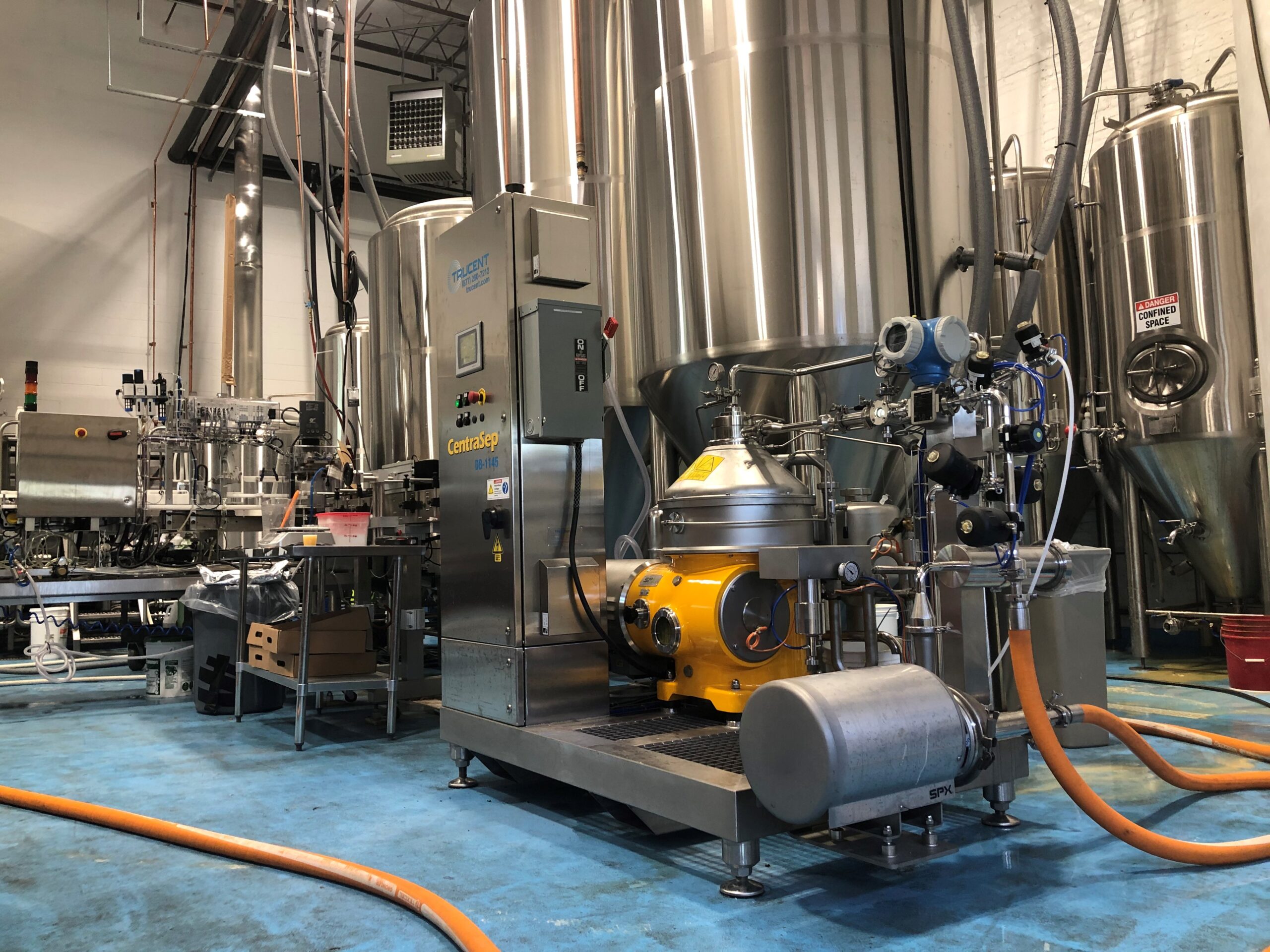
Photography courtesy of Trucent
Essentially a centrifuge uses centrifugal force to separate solids from liquid. For beer centrifuges specifically, pull any proteins, hops, yeast, or other particles out of the beer, cleaning the liquid before moving to the next tank—most commonly done as you transfer the beer from fermentation to the brite tank.
Trucent Craft Beverage Industry Manager Christopher Clausen likens this process to an amusement park ride.
“What I like to relate it to is the ride at the carnival where you stand on the side, and they spin you around and drop the floor out, and you stick to the side,” Clausen says. “We do that on a much more intense scale. What we’re doing is creating artificial gravity.”
Clausen explains that the days-long process of bringing a fully fermented beer down to temperature to drop particles out of a cone bottom can be done in a beer centrifuge in a fraction of a second.
The Three Biggest Advantages of Using a Beer Centrifuge
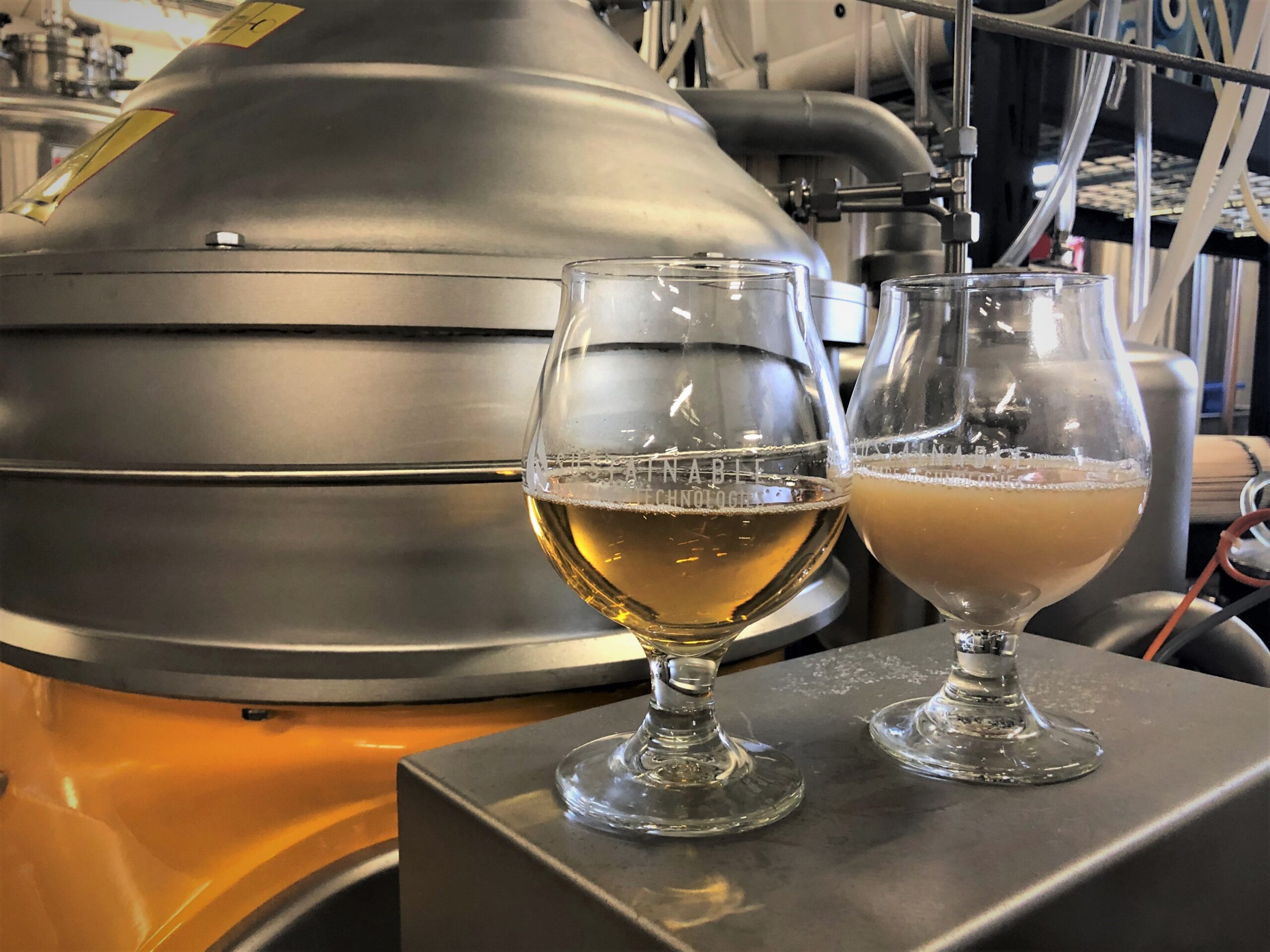
Photography courtesy of Trucent
A beer centrifuge can result in several advantages for a brewery investing in one.
According to Clausen, some benefits include a consistent product due to the mechanics controlling turbidity; overall quality of the beer with the removal of hop burn, pectin, or any type of contaminant; an increase in yield; and improved shelf life.
Better Product
HOB Brewing Head Brewer James Howdeshell says they’ve been using their Trucent beer centrifuge for about a half year. After a slight learning curve to get dialed into the machine, he says the improvements have been tangible.
“We’ve won a couple of awards, a couple of local state competitions with beer that previously hadn’t won until after we have centrifuged it,” he says. “Though we have won awards in the past, the centrifuge has improved consistency across each brand. Beer competition feedback has shown that the clarity of our beer has improved and [we’ve gotten] higher style marks.”
Mortalis has been open just shy of five years and has been using an Alfa Laval beer centrifuge for about half of that time. Owners Paul Grenier and Dave Luckenbach love the returns.
“When you put the centrifuge into play, you’re gonna get a much better-tasting IPA. more vibrant, less throat burn—less greenness, as they call it—and you’re gonna get all those things from that centrifuge,” Grenier says. “Not to mention, the better yield, of course.”
Luckenbach says that they’ve kind of factored the losses into their recipes. So the yield and returns, while great, aren’t the be-all and end-all for him.
“[Yield improvements] didn’t really matter to us,” he says. “I don’t know how to say this without sounding like a pretentious [expletive]: Quality trumps quantity.”
Increased Yield
Quality-quantity conversations aside, the beer centrifuge is likely to give you larger volume from your brew session.
According to Clausen, yield increases from the fermenter depends on the style of beer. For fruited beers, he says they can increase twenty-five to thirty percent on many brands (anything previously lost to pectin contamination); dry hopped beers can see a five to fifteen percent increase; and other brands, with more simple fermenter additives, can see a three to ten percent increase.
Mortalis grew accustomed to massive losses on their IPAs before picking up their beer centrifuge. Since then, their losses have been cut in half.
“When we started IPAs, we were getting about thirty-five to forty percent of loss from hops; with a [beer] centrifuge, we’re at about fifteen to twenty percent loss. So that’s just massive numbers,” Luckenbach says. “When you’re brewing a 10-bbl…batch, you’re getting an extra two barrels of beer that’s paid for the centrifuge itself.”
Howdeshell says that HOB Brewing has definitely seen an uptick in yields since bringing in the Trucent.
“We are seeing anywhere from a ten to twenty percent increase depending on the style of beer we run through,” he says. “Lighter beers get a better return.”
But Clausen says there is a way to really improve your yield.
“Yield increases can really take off when the brewery moves the beer faster; especially with ales, this can be significant,” he says. “We’ve seen customers increase production capacity by fifty percent after adding a centrifuge and without adding a single tank.”
“Once the brewery team is happy with the beer, it can be crashed and centrifuged. This saves days or weeks on each production run, previously tying up the fermenter for settling time,” Clausen adds. “That time savings adds up very quickly. This has allowed some breweries to stop contract brewing or speed up distribution plans.”
Luckenbach, echoing Clausen, said that Mortalis saved around three weeks with a beer centrifuge brewing up a fruited sour as opposed to just naturally letting it cold crash out.
“You’re gonna save your time; you’re gonna have a higher turnaround; you’re gonna have a better yield; and you’re just gonna have a cleaner, brighter product,” he says.

Photography courtesy of Grace Weitz
Increased Shelf Life
When brewing beer, there are a lot of ingredients, many of which leave particles that you want out of the finished product. The beer centrifuge can take all those out, and while the appearance is clean, it also can help extend the life of the beer.
“Because you’re removing all those organics and any of those scenarios, you’re gonna have increased shelf life,” Clausen says. “The degradation of those organics is what’s going to be creating the off flavors. So if we remove them up front, you’ve got a much more shelf-stable product.
Clausen adds, “Especially when people start to look to distribute. A lot of times that’s the first time that they’ll start looking at a centrifuge.”
HOB Brewing hasn’t had the beer centrifuge long enough to have collected enough data to know for certain whether the shelf stability has improved on its beers. But Howdeshell seems to feel the beer has held up better.
“We have noticed more shelf stability in some products, but it is hard to say if we are getting a better shelf life,” he says. “We have only been using the centrifuge for around six to eight months and have not yet encountered any issues.”
The same can be said for Mortalis. They aren’t really calculating the shelf life compared to packaged beers made without the centrifuge.
“We have honestly been using it so long that I can’t remember a time when we didn’t [have a centrifuge],” Grenier says. “It certainly was not a thing that we said, ‘OMG, our beer is lasting so much longer thanks to this thing.’ Maybe on the IPA’s, but we have always had very low oxygen pick-up in our canning process.”
What Style of Beer Should You Run Through the Centrifuge?

Photography courtesy of Mortalis
The only beers Mortalis doesn’t put through its beer centrifuge are pilsners or lagers. However, they don’t hesitate to run everything else through the system. And no matter the style, there’s a noticeable improvement.
“We noticed that the stouts were able to get a clear deeper, darker base; for the IPAs, we’re able to get more volume, which we were hoping for, obviously; and for the sours, we were hoping to filter out as much yeast as possible,” Grenier says.
He continues, “Without the [beer centrifuge], you’re looking at extending the time of the fermentation of your IPAs; you’re looking at risking potential exploding cans when it comes to something like a fruited sour; and for a stout you’re risking extra turbidity, murky beers, and honestly the centrifuge solves all those problems for us.”
Howdeshell said at HOB Brewing they initially were using the beer centrifuge for a German hefeweizen and, after learning the system, expanded its usage.
“Pretty much, we’re using it on every style of beer that we produce,” Howdeshell says. “The one we haven’t used it on, we have not used it on a hazy. It’s very difficult to centrifuge it and still retain the haziness that makes its appearance appeal.”
When Should You Consider Buying a Beer Centrifuge?
Historically, only larger, industrial-sized breweries used centrifuges. But over the last couple of decades, companies like Trucent and Alfa Laval created smaller, more cost-efficient machines for craft breweries.
While a beer centrifuge can benefit smaller breweries, Clausen notes a threshold where investing in the product makes more sense.
“We find that it starts to make financial sense at about 1,000 barrels a year. That is when we start having those conversations,” he says.
Clausen said that some customers are a little lower than that number, but those are niche breweries with specialty products.
“Really, it starts to make a lot of sense at that 5,000 to 8,000 barrels [range], and then anything over 10,000, the value it brings, becomes a different conversation,” Clausen says.
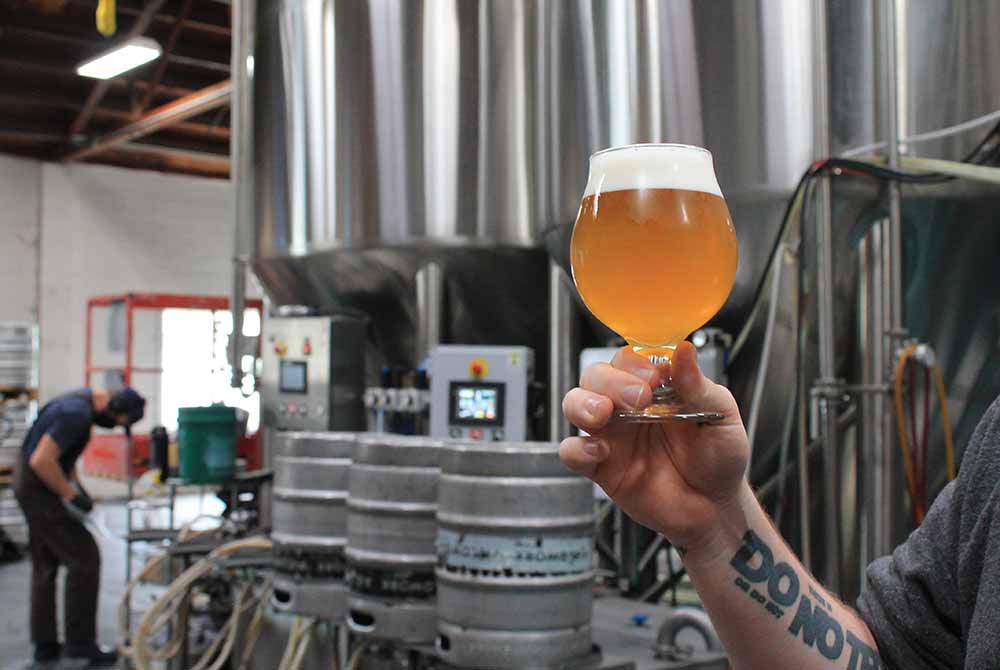
Photography courtesy of Grace Weitz
How Fast Can You Pay off Your Beer Centrifuge?
There are a lot of factors when determining how long it will take a brewery to pay off a beer centrifuge.
A beer centrifuge can cost anywhere from $60,000 to $500,000, depending on the size and what you put into them. Clausen says typically they see a return on investment in twelve to eighteen months.
The monetary value it returns is irrelevant for the brewers, both at HOB Brewing and Mortalis.
“I want to make the best product we can,” says Howdeshell, who noted that it would take them roughly two years to get their ROI. “This [centrifuge] definitely helped bring that about. Even if we were just giving away beer for free, having a centrifuge would be worth it.”
Luckenbach said that the ROI depends on the styles going through the beer centrifuge. Mortalis reported about a forty percent loss on their IPAs, which is down to around twenty percent loss with the beer centrifuge.
“If you’re brewing all those super hype styles, I would say it is a safe bet within six months to a year, you’re going to end up paying that sucker off, and you’re never going to look back,” Grenier says. “The biggest takeaway is the benefits outweigh the price of what they’re going to pay,”
The One Thing You Should Do Before Purchasing a Beer Centrifuge
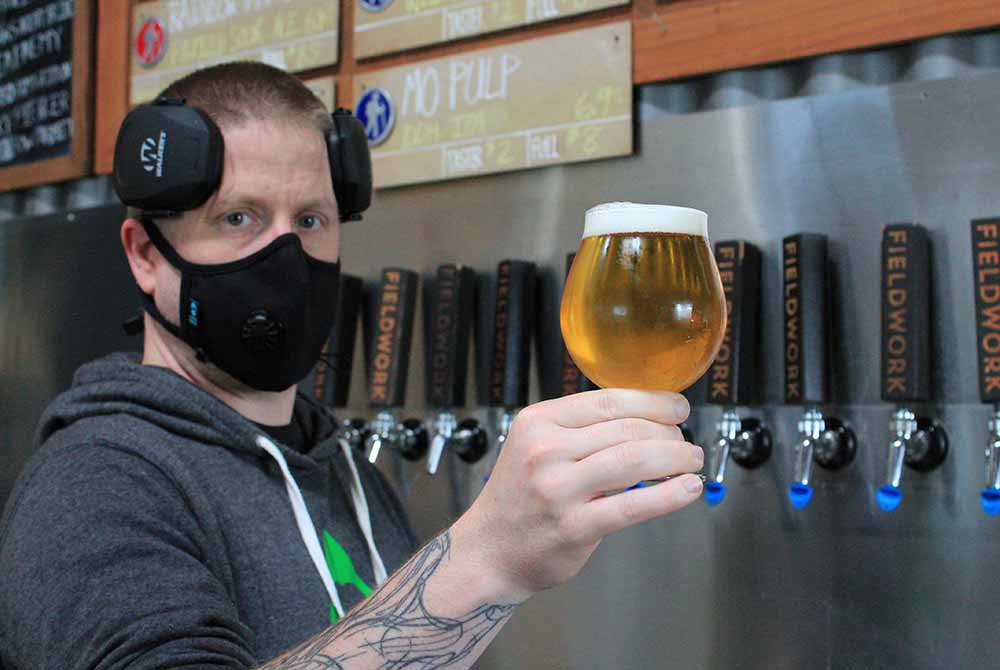
Photography courtesy of Grace Weitz
Simply put: Talk to others.
“We’re really big into the education side of things. We want people to ask those questions,” Clausen says. “One of the pieces of advice that I would give is to make sure that you know what you don’t know.”
Clausen added that many great beer centrifuge operators nationwide advised them to reach out and talk to a brewer.
Howdeshell concurred. “Definitely reach out to other breweries in [your] area running a centrifuge and ask them questions about it,” Howdeshell says. “Just to get the idea of what it does is very beneficial.”
Grenier and Luckenbach said to reach out to brewers and learn what a beer centrifuge brought to their operations. They pointed out that they have been using one for years and have never been afraid to push the envelope, centrifuging everything from whole strawberries with seeds to 300 full-size cheesecakes and loads of hops with no issues.
Their advice?
“You don’t want to put coconut through because it will clog up, and you will have to take it apart, and you run the risk of breaking something,” Luckenbach says. “Oh, and it will not remove Sour Patch Kids, gummy bears or worms.”



